
The Tokens, Tickets & Passes of the Harton Coal Company: Part II - An Introduction to the Company's Tokens, Checks and Passes.
In this, the second article devoted to the tokens, tickets and passes of the Harton Coal Company of South Shields we examine the bulk of the paranumismatic material issued in the name of the company. The various miners' association badges plus medals related to the company's five collieries will be dealt with separately in a final article. For a basic background history of the coal company, its collieries, quarries plus its private passenger railway the reader is directed to the introduction of the first in this series of articles.

Figure 1.0: A map showing the extent of the Harton Coal Company's mining empire plus the routes of both its private mineral and passenger (i.e. the S.S.M. &W.C.R.) railway lines.
Most
collieries are represented in the field of paranumismatics only by one or two
examples of different safety lamp issuing tokens or checks. However, in
the case of a relatively small number of collieries additional tokens were
issued for use within the day-to-day operations of the pit. Examples of such
additional tokens are numerous (at least twenty-one different types in all
according to the author's latest count) but in the main include pay checks, canteens tokens,
pithead baths tokens and checks, workshop tool issuing tallies plus time
recording checks. The latter were used at some pits prior to the introduction of
“clocking on/off” machines.
In the case of the Harton Coal Company Ltd.
(HCC) plus the Whitburn Coal Company Ltd. (WCC - which existed as a separate company to the HCC until it was absorbed by the latter in 1891) there
are currently three separate categories of token known to have been used although
in all probability there are probably more still waiting to be re-discovered. Within the
list of known tokens issued by the HCC are included at least thirty-five
different varieties of checks, tokens and passes. This is surely a record number of token issues for any of the private
colliery companies who operated in the United Kingdom prior to 1947.
A
list of the currently known HCC and WCC token categories is given and discussed
further below.
1) Token Category “A”- Lamp Tokens & Railway
Passes
The best known of the WCC and HCC checks are the very large
and ornate brass
lamp tokens and railway passes. There are three varieties of such checks
known;
Type No.1 - A square (51mm by 51mm) brass embossed “Lamp
Pass”.
Type No.2 - A circular (50mm diameter) brass embossed “Workman’s Railway Pass”.
Type No.3 - An oval (53mm by 31 mm) brass embossed combined “Workman’s Lamp and Railway Pass”.
Two separate sets of each of the above check types exist. The first set, which without doubt is the earlier of the two, was issued in the name of the WCC Ltd. while the second set bears the name of HCC Ltd. Those tokens and passes issued in the name of the WCC Ltd. would no doubt have been replaced after 1891 by those bearing the name of the HCC Ltd.
Examples of all
the the tokens in this category are uniface with the exception of Types No.2 and No.3 when issued in the name of
the HCC in which cases the following reverse legend is also present “THIS PASS
ONLY AVAILABLE WHEN TRAVELING TO AND FROM WORK”. Also when issued in the name
of the HCC token Type No.2 is known to exist in two separate die varieties with one having
slightly smaller lettering than the other.
Examples of both varieties
of check types No.2 and No.3 plus type No.1 when issued in the name of the WCC
Ltd would have been restricted for issue to only those of the company’s employees working in the
Marsden area (i.e. at either Whitburn Colliery or one of their nearby limestone
quarries or lime works). It is probable that those tokens of type
No.1 were used at each of the HCC’s five collieries, i.e.
Harton, St. Hilda, Boldon, Whitburn and later Westoe.
Given that examples of each of the three token varieties exist in both the names of the WCC and the HCC it can be reasonably assumed that the tokens within each of the two separate sets were contemporary with one another.
The author's current thoughts regarding the use of the different types of checks which compise this category are outlined below.
Type No.1 – Lamp issuing (only) tokens would have been in common use throughout all the collieries operated by the HCC. At Whitburn Colliery such tokens would only have been issued to local miners living within easy commuting distance of the pit (i.e. those miners living in Whitburn or Marsden who had no need of using the S.S.M.&W.C.R. to travel to and from work). Those men living further a field would probably have been issued with one of token Types No.2 or No.3 depending on their job descriptions.
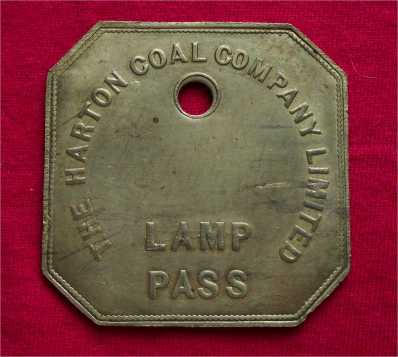
Figure 2.0: A uniface, brass embossed HCC Lamp Pass or Token (Actual size: 51mm by 51mm).
At the start of each shift these tokens would have been handed in by the miners at colliery the lamp cabin. In return each man recived a flame (or electric) safety lamp bearing the same identification number as that stamped on his personal token. On completion of the shift each miner would return his lamp to the lamp cabin attendant who in exchange would hand him back with his personally numbered lamp token which he would have taken home for safe keeping until his next shift. Similar single check lamp token systems were used throughout Britain’s coalfields from as early as the 1860/70s.
Type No.2 – A pre-paid or free issued railway pass for use on the S.S.M.&W.C.R. line. This was the HCC's own privately owned mineral and passenger railway which linked Whitburn and South Shields. These tokens were presumably issued only to surface workers (i.e. employees who didn’t need a safety lamp as part of their regular jobs) employed at Whitburn Colliery and/or possibly the company’s nearby limestone quarries and kilns who daily used the South Shields to Whitburn Colliery line to travel to and from work. If these passes were not free issued by the WCC/HCC it is assumed that payment for them was by regular weekly deductions made by the coal company from the pay packets of the workmen concerned. The number stamped on each pass would probably be the same as the workman’s payroll number and as such acted as a form of personal identification.
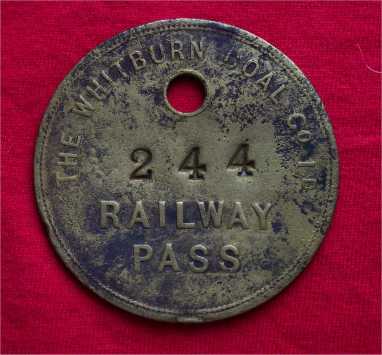
Figure 3.0: A uniface brass embossed WCC Railway Travel Pass (Actual size: 50mm diameter).
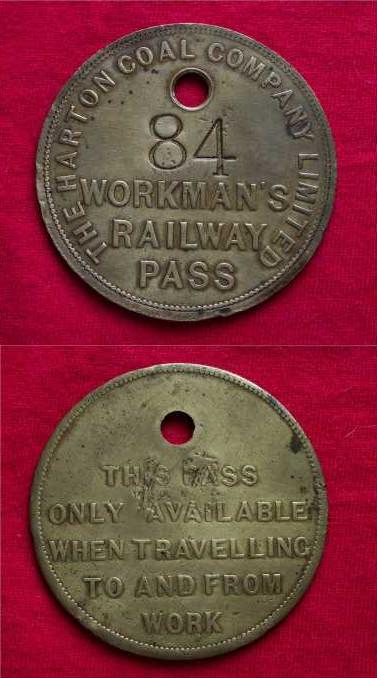
Figure 4.0: Obverse & reverse sides of a brass embossed HCC Railway Travel Pass (Actual size: 50mm diameter). Illustration shows smaller letter version of the two known die varieties of this token.
Type No.3 – A combined railway pass
and safety lamp token issued to colliers employed at Whitburn Colliery who daily
used the S.S.M.&W.C.R. to travel to and from work. As
for token Type No.2 this would presumably have been a free issued or pre-paid pass which given
its serial number would have been identifiable with a specific miner and safety lamp.
Such passes/tokens would have been hung on the lamp cabin tally board (along with
tokens of Type No.1) until the end of each shift. On returning to the pit bank
each collier would redeem his personal token/pass from the lamp cabin attendant
(in
exchange for his lamp) in readiness for his return trip home to the South Shields
area.

Figure 5.0: A uniface, brass embossed WCC combined Lamp and Railway Travel Pass (Actual size: 53mm by 31mm).
As was usual in other colliery companies if a workman lost any of his tokens he would have to report it to the Coal Company. In due course a new token would have been issued by the company with a monetary deduction being taken from the miner's pay in-lieu of its replacement cost.

Figure 6.0: Obverse & reverse sides of a brass embossed HCC combined Lamp and Railway Travel Pass (Actual size: 53mm by 31mm).
More research is required into the use and operation of the above tokens. One particular puzzle related to Token Types No.2 and No.3 is that of reconciling their operating dates and precise method of use along side the sets of conventional card tickets which from as early as 1913 onwards were issued by the HCC for daily or weekly travel by workmen using the S.S.M.&W.C.R . One possible explanation for their having been two types of workmen's tickets is that the issue of metallic passes may have been restricted to the company's employees only where as the conventional card ticket could have been sold to other workmen using the line that didn't work for the coal company. At the Whitburn terminus of the line there certainly existed a paper mill for some years that was totally independent of the HCC. No doubt this plus other local factories would have employed men from South Shields who used the S.S.M.&W.C.R. to travel to and from work. It is interesting to note that none of the ex-employees of the S.S.M.&W.C.R interviewed by the author (some of whom started work on the line in the late 1940s) could remember the use of any sort of metallic workmen's travel passes being used on the line during their working lives.
2) Token Category “B” – Railway Fare Payment Tokens
Although a
definite link still has to be proven the next category of HCC tokens here
discussed
are also believed to have been used on the company's S.S.M.&W.C.R which
served its colliery at Whitburn plus its quarries and lime works at Marsden.
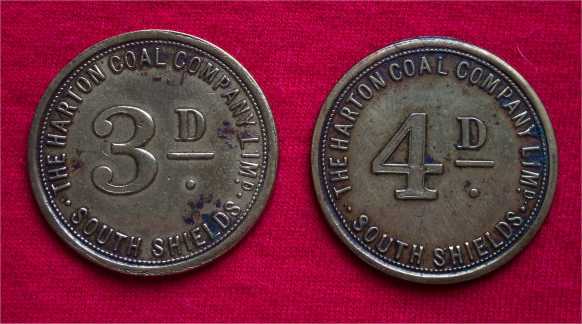
Figure 7.0: Uniface, brass embossed, S.S.M.&W.C.R. - 3d and 4d travel tokens (Actual size: 30mm diameter).
These brass tokens are all of 30mm
diameter and are uniface. In all cases a legend around the edge of the tokens
reads “THE HARTON COAL COMPANY LIMD. SOUTH SHIELDS”. In the centre of each token
is one of three monetary denominations 3D, 4D or 6D. It is not known how exactly
these tokens were used but it has been postulated that they were free
issued tokens issued by the
HCC to certain of its staff (possibly managers and officials) who had need to
commute on company business on only an infrequent basis between South Shields and
Whitburn.
On demand the tokens would be handed to a ticket office attendant or to a ticket
inspector who in exchange presumably issued a card ticket receipt. It is
interesting to note how the three denominations found on these tokens compared to the various costs of
different classes of single and return fares for the journey between
Whitburn and South Shields.
First Class - 6d single; 9d return.
Third Class - 4d
single; 6d return.
After c.1913 the cost of these fares remained fixed for near enough the entire period for which the HCC owned and operated the S.S.M.&W.C.R.
Tokens collected by the S.S.M.&W.C.R staff would presumably have been returned to the administration offices of the HCC for re-issue to the employees travelling on company business.
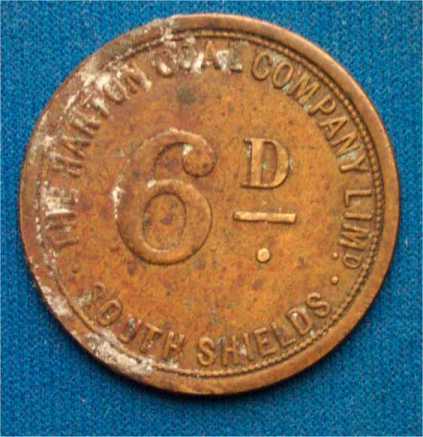
Figure 8.0: Uniface, brass embossed, S.S.M. & W.C.R. - 6d travel token (Actual size: 30mm diameter).
It is difficult to attribute a date of issue or period of use for these tokens although possibly on the grounds of style alone one may hazard a guess at the 1910s to 1920s. Certainly none of the ex-employees interviewed by the present author who had worked on the S.S.M.&W.C.R (from as early as the mid 1940s) could remember ever having seen or heard of these tokens. However, one resident of the Marsden area who was interviewed remembers finding what he believes was one of these tokens lodged between a crack in the concrete base of the small passenger shelter at Marsden Cottage Halt when he was a boy in the early 1950s. This find spot at least would again link the tokens with their use on the S.S.M.&W.C.R.
3) Token Category “C” – Concessionary Coal Delivery Tokens
The last
major category of tokens issued by the HCC are believed to have been used in
connection with deliveries of concessionary coal.
Concessionary coal was delivered to the homes of many of the HCC’s employees by cart or trucks operating out of one of the company’s various land sale depots which were distributed throughout the South Shields area. Most of the house holding married miners who worked for the HCC qualified for a delivery of up to 15 cwt of concessionary coal per month. This normally comprised of indifferent quality run of mine coal which was delivered and off-loaded free of charge into the back lanes which ran behind the rows of miners' terrace houses. For those of the company's office staff that qualified for concessionary coal the arrangement is understood to have been slightly different. In their cases it is understood that the company may have charged a small fee for the coal's delivery and off-loading. It has been suggested by one ex-HCC employee that on receipt of an appropriate amount of free issued or pre-paid tokens (that were obtain from the coal company) from the householder the coal deliverymen would off-load an equivalent amount of coal to that totalled on the tokens they were given. The coal would then be off-loaded directly into each household’s coalbunker or back yard.
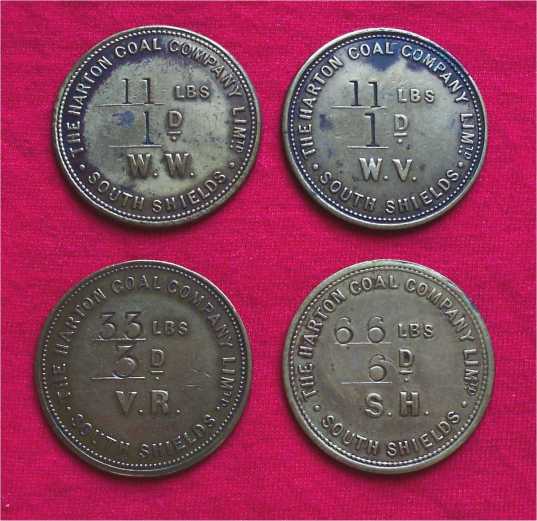
Figure 9.0: A selection of uniface, brass embossed concessionary coal delivery tokens of various weights/denominations originating from W.W. - Wagon Way; W.V. - Waterloo Vale; V.R. - Victoria Road and S.H. - St. Hilda landsale coal depots (Actual size: 30mm diameter).
Each of
the tokens in this category are uniface and of brass measuring 30 mm in
diameter. In all cases a legend around the outside of the tokens reads “THE
HARTON COAL COMPANY LIMTD. SOUTH SHIELDS”. In the bottom centre field of each
token are the initials of one of the company's land sale depots from where
domestic and concessionary coal was
supplied. Four separate sets of initials (see below) are known from this series
of tokens although the HCC had more than this number of land sale depots in total;
· W.V. -
Waterloo Vale land sale depot.
· V.R. - Victoria Road land sale depot.
·
S.H. - Saint Hilda Colliery land sale depot.
· W.W. - Wagon Way land sale
depot.
The last of these initials (W.W.) had originally been postulated as standing for Whitburn Welfare. It is now thought more likely that they actually stand for the initials of Wagon Way Depot. A lesser know land sale depot which was located close to St. Hilda Colliery Yard.
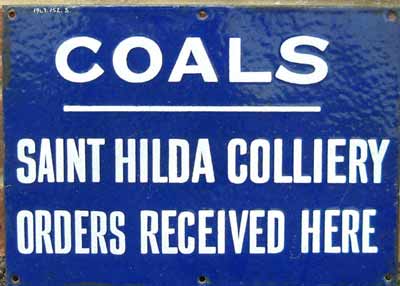
Figure 10.0: An early twentieth century enamel advertising sign from St. Hilda Colliery Coal Depot in South Shields.
Above
the various land sale depot initials each token bears a
stamped quantity in weight (lbs) and a monetary denomination (pennies).
Rather strangely these values are always stated in multiples of 11 lbs in
weight and 1D in value. For each of the four land sale depots tokens are believed to have
been issued bearing the following weights and denominations;
(a) 11 lbs.
in weight for 1D
(b) 22 lbs. in weight for 2D
(c) 33 lbs. in weight for
3D
(d) 44 lbs. in weight for 4D
(e) 55 lbs. in weight for 5D
(f) 66
lbs. in weight for 6D
Presumably specific tokens for a given land sale
depot would have been issued to the office staff according to the proximity of
their homes to the nearest depot.
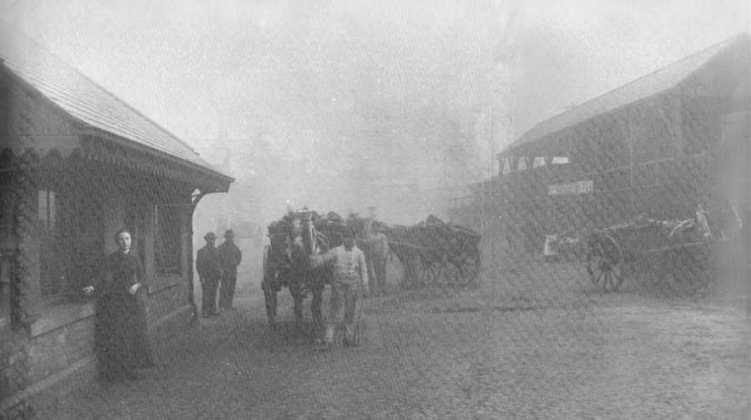
Figure 11.0: A view of loaded coal delivery carts passing over the weigh bridge at Waterloo Vale Landsale Depot, South Shields c.1890s.
The present author
has certain issues regarding the current understanding of the use of these
tokens. The use of only multiple quantities of 11 lbs in weight appears to be an
odd if not unfeasibly small way of quantifying loads of concessionary coal that
would have been better quantified in multiples of cwts. It is presumed that
the monetary values on each of the tokens in this category reflect the cost of
the coal’s carriage and un-loading only as the coal its self was free issued.
Even if the denomination values on the tokens do not represent a coal carried
charge the present author finds it is difficult to come up with an alternative explanation.
If the values were representative of total selling prices for the associated
weights of coal along side them appear to be very low. When it comes to this particular category of tokens there are still many
questions that await satisfactory answers.

Figure 12.0: An incusely die stamped concessionary coal delivery token from an unspecified HCC landsale coal depot (Actual size: 48mm by 33 mm).
A variation of this category of tokens is known from a single example measuring 48 mm long by 33 mm wide. This token bears a the single die punched legend "HARTON COAL C(O)" across its top and a hole in its center. Presumably the hole was for stacking and safe keeping a multiple number of similar tokens on a steel cord or spike. Crudely stamped on either side of this central hole are the additional letters "11 P" (presumably a miss abbreviation for "pounds" which should have more correctly read lbs) and "1D". No land sale depot identification letters are present as per the main series of embossed tokens. The crude "home made" nature of this token possibly identifies it as an "emergency issue" produced by the company when they had run low on the stock of the more formal embossed tokens. Alternatively they could have arisen from land sale depots for which embossed tokens were not made.
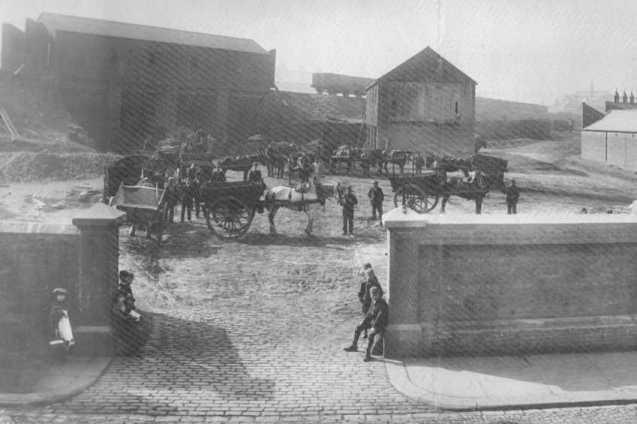
Figure 13.0: A view of the entrance to Victoria Road Coal and Lime Landsale Depot, South Shields 1893.
A further example associated with this last token category is known (brass, uniface and measuring 38 mm square) bearing the legend “THE HARTON COAL COMPANY LIMITED” around the weight denomination of “1 cwt”. These tokens are also believed to have been associated with concessionary coal deliveries. It is possible that such tokens were routinely issued by the HCC to those of its miners who qualified for concessionary coal deliveries. The use of similar tokens is known at other north-east pits such as Seaham and Shotton to name but two. The tokens were collected by those eligible miners from the colliery time or pay offices every two to four weeks just prior to their scheduled delivery of concessionary coal. The tokens would then be left at each miner's home for his wife or dependants to give to the coal company's delivery men when they arrived in their area. On receipt of the tokens the delivery men would off-load an equivalent amount of coal to each home.
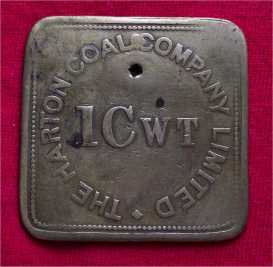
Figure 14.0: An uniface, brass embossed 1 CWT concessionary coal delivery token (Actual size: 38mm by 38 mm).
An
Appeal for Information:
In order to clear up many of the
assumptions plus un-answers questions relating to the above series
of tokens I would appreciate if any readers of this article could provide me with confirmation or
further information regarding any of their uses.
Acknowledgements:
I would like to thank Jeff Gardiner for various of the illustrations used in this article plus for sharing copies of his correspondence with Fred Bond (via Neil Sinclair of Sunderland Museum and Art Gallery) regarding the explanation of the use for the Category "C" tokens. Fred was a S.S.M.&W.C.R employee and derived his information regarding the concessionary coal tokens from his late brother John who had once served as a miner with the HCC.
I would also like to acknowledge William Hatcher, Fred Bond, William Henderson and John Payton for providing me with much additional background information plus their assistance in helping me in trying to make sense out of many of the obscure tokens discussed above. Finally I would also like to thank Janis Blower for publicizing my request for information regarding the tokens of the WCC and HCC amongst the readership of the South Shields Gazette. Last but not least I am indebted to Alan Vickers for commenting on the original draft for this article.
References:
Checks, Tokens, Tickets And Passes of County Durham and Northumberland. Gardiner. J. (1996). Private publication.
The South Shields, Marsden and Whitburn Colliery Railway. Hatcher. W. (2002). Published by Oakwood Press.
Based on an article that first appeared in the South Shield Gazette in October 2003 and here modified and reproduced by kind permission of the author : Mark Smith. © November 2003